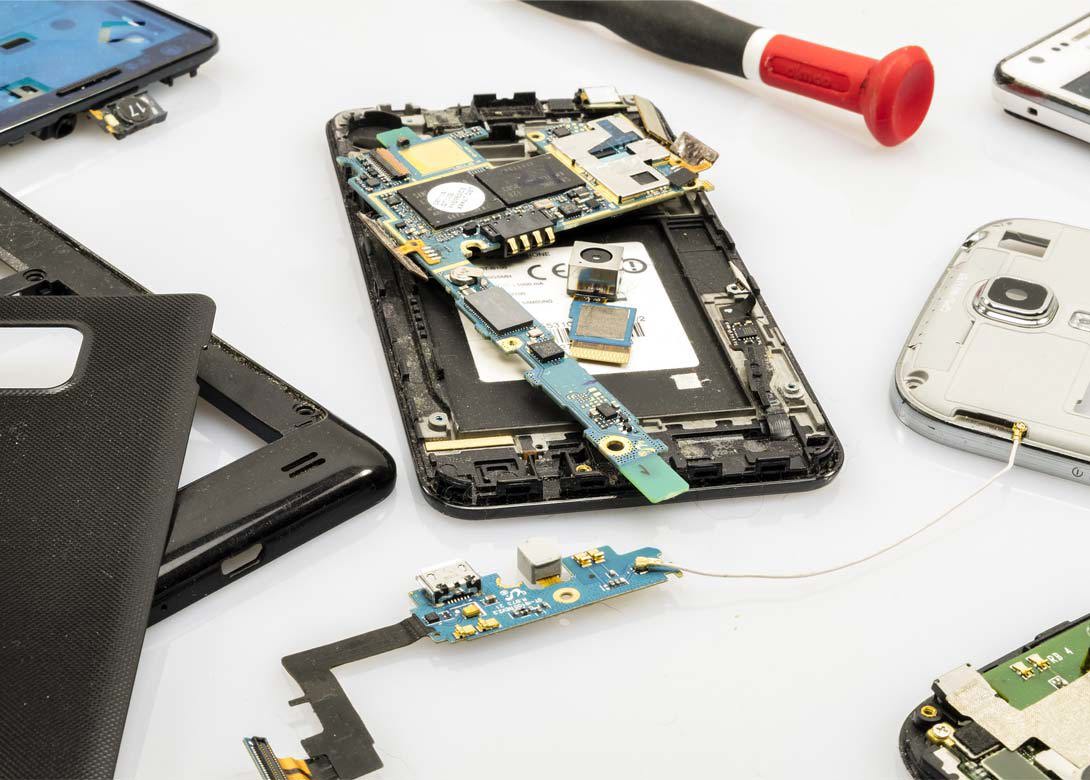
Cyanoacrylates (CAs) are easy to use, single part adhesives that cure quickly at room temperature, offer good throughput and are suitable for bonding a range of substrates. Here Peter Swanson, managing director of adhesives specialist Intertronics, explains how to manage and prevent blooming in the CA process.
If you have ever used a cyanoacrylate adhesive - often known as “instant adhesive” or ‘superglue’ - you may have seen blooming - a chalky, white residue on the surface of your part. Importantly, blooming does not affect bond integrity, but it is undesirable if aesthetics are important, such as with jewellery, or if the presence of blooming might imply a quality problem to your customer - for example, when making medical devices, instrumentation or consumer electronics.
CAs cure very rapidly, achieving fixture strength in seconds and full cure in up to 24 hours. The chemistry is quite volatile, and blooming is a side effect of this. The energy from the cure chemical reaction can promote the release of unreacted cyanoacrylate monomers into the air, which condense and fall back onto surface in the form of white crystals or flakes. The resulting by product, most noticeable around the periphery of the bondline, is known as blooming, frosting or blushing.
Several cyanoacrylate monomers are used to formulate CAs. Ethyl (ECA) monomers are the most common, but their volatility means they also more prone to both blooming and a harsh odour, which may be irritating and require local ventilation during use.
Cyanoacrylate adhesives based on methoxyethyl (MECA) monomers are often marketed as ‘low odour, low bloom’ formulations. However, they can compare poorly in terms of cure speed, strength and cost, and so their use involves compromises.
The recent launch of the Born2Bond Ultra CAs, offers another option as it combines the fast cure associated with ECA-based CAs with the low blooming characteristics of MECA-based CAs. Their inherently low volatility means less odour, and they are less irritating.
Another way of reducing blooming is to minimise the size of adhesive fillets. Excess adhesive squeezed out into fillets around the bond line will cure more slowly and will provide exposed surfaces from which blooming can occur. Where joint size or configuration means that fillets are inescapable, a low bloom, fast cure formulation allows manufacturers a wider dispensing tolerance.
In general terms, slowing down the cure will allow more time for volatile monomers to be released. On the other hand, making the cure faster will generate a higher exotherm - heat energy - in the adhesive, encouraging the release of volatiles. Controlling the speed of cure is one potential way of minimising blooming.
If exposed fillets are unavoidable, accelerating cure should restrict blooming. One method is to use an activator, but application might need to be carefully controlled, as there is a risk that this chemical reaction is too fast, creating an exotherm and leading to blooming. Another, possibly more elegant, approach is to use a light cure cyanoacrylate adhesive, like Born2Bond Light Lock. Any interfacial adhesive is cured by the normal cyanoacrylate mechanism, but exposed fillets are cured tack-free by exposure to low intensity UV light. The light cure of only a few seconds eliminates the possibility of blooming because the volatiles never have a chance to become mobile.
Cyanoacrylate adhesives will become slower with age, and so more prone to blooming. Practice good stock control and housekeeping to preclude the use of materials which are out of shelf life.
Simple local ventilation and increased airflow will help to blow the volatilised monomers away from the parts before they can settle on the surface. Blooming will also occur if the bonded parts are placed too quickly into a sealed environment such as a bag or shipping container, where any volatility is trapped with the parts.
Higher ambient temperatures encourage the volatility of the CA monomers, leading to a higher likelihood of blooming. Conversely, lower temperatures slow the reaction mechanism, causing prolonged cure time and opportunity for volatiles to be released into the air.
Because CAs usually cure by a reaction with surface moisture, relative humidity (RH) can be important. Best practice would suggest keeping the relative humidity to 40% - 60% and the temperature at around 21⁰C; consistency of environmental conditions will inform consistency of process times and outcomes.
Acidic surfaces like wood or leather will cause cyanoacrylate adhesives to cure more slowly, increasing the risk of blooming. In these cases, it is recommended that a surface insensitive CA is used. Alternatively, Born2Bond Ultra offers a fixture time on leather of 5 - 10 seconds, with a low odour, low bloom formulation.
If cyanoacrylate adhesive blooming is an issue, consider changing to one of the latest innovative technologies, which can alleviate the problem without conceding adhesive performance. Dispensing and environmental control are also important to help get consistent results.

Having spent a decade in the fastener industry experiencing every facet – from steel mills, fastener manufacturers, wholesalers, distributors, as well as machinery builders and plating + coating companies, Claire has developed an in-depth knowledge of all things fasteners.
Alongside visiting numerous companies, exhibitions and conferences around the world, Claire has also interviewed high profile figures – focusing on key topics impacting the sector and making sure readers stay up to date with the latest developments within the industry.





